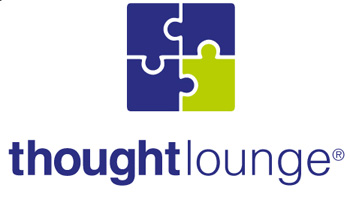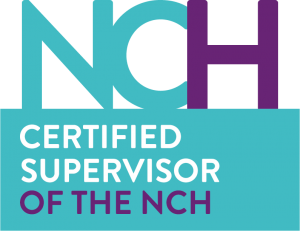Unveiling the Dynamics of Fogg's Behaviour Change Model: Integrating Hypnotherapy for Lasting Transformation

Understanding Fogg’s Behaviour Change Model
Human behaviour is complex and often difficult to predict or modify. Dr BJ Fogg, a behavioural scientist at Stanford University, introduced a model that simplifies the factors influencing behaviour change. Fogg’s behaviour Change Model revolves around three core elements: behaviour = motivation, ability, and triggers (prompts). By understanding and effectively manipulating these components, one can, understand how to facilitate successful behaviour change. His (Fogg, 2007) formula is written as B=MAP
Motivation: At the heart of Fogg’s model lies motivation—the desire or willingness to perform a certain behaviour. Motivation can be influenced by a multitude of factors, including emotions, needs, and societal pressures. According to Fogg, motivation fluctuates and is often unreliable for instigating lasting behaviour change on its own. High motivation might lead to immediate action, but it can fade quickly without consistent reinforcement.
Ability: refers to the individual’s capability to perform the desired behaviour. It encompasses various aspects such as physical ability, knowledge, time, and resources required to execute the behaviour. Fogg emphasizes that for a behaviour to occur, the individual must possess the necessary ability at that moment. Even if motivation is high, without sufficient ability, the behaviour change may not materialize.
Triggers: Triggers, or prompts, function as catalysts that prompt a behaviour. They can be external (like notifications or reminders) or internal (thoughts, emotions, or habits). Triggers can be influential in initiating behaviours, especially when motivation and ability align effectively with them. The timing and relevance of triggers significantly impact whether a behaviour occurs or not.
Behaviour Change Equation
Fogg’s model can be represented by a simple formula: B = MAP (behaviour equals Motivation, Ability, and Prompts (Triggers)). This equation underscores that for a behaviour to happen, all three elements—motivation, ability, and triggers—must converge at a particular moment.
Applications of Fogg’s Model in Habit Change and Problem Behaviours
Within healthcare and wellness, the model is employed in interventions aimed at promoting healthier habits, such as exercise routines, medication adherence, or dietary changes. Tailoring interventions to enhance motivation, simplify abilities, and prompt through effective triggers aids in achieving sustainable behavioural changes. Fogg’s behaviour Change Model offers a structured approach that can be applied effectively to break addictions and problem behaviours. Addressing addictions involves intricate psychological and physiological elements, and leveraging Fogg’s model can offer a strategic framework for intervention.
Addictions often involve strong, persistent motivations. The key is to identify and tap into alternative motivations that can counteract or outweigh the addictive drive. By exploring an individual’s underlying motives and desires, interventions can be designed to bolster motivations toward healthier choices. For instance, emphasizing the benefits of a sober lifestyle, personal growth, improved relationships, and overall well-being can serve as motivational triggers.
Breaking an addiction requires addressing both the psychological and practical aspects of an individual’s abilities. Simplifying the steps towards change can increase the perceived ability to resist addictive behaviours. This might involve providing resources, support networks, therapy, skill-building sessions, and strategies for coping with triggers or cravings. Enhancing the individual’s belief in their ability to overcome the addiction is crucial for success.
Triggers can either perpetuate addictive behaviours or be utilised to prompt healthier choices. Understanding the triggers that lead to addictive behaviours—whether they are internal (emotions, thoughts) or external (environmental cues, social settings)—is crucial. By modifying or replacing triggers with healthier alternatives, one can create an environment that supports recovery. This could involve developing new routines, changing social circles, or using reminders for positive habits.
How can the Application of Fogg’s Model help in Addictions / Habit Recovery:
Motivation Enhancement: Creating interventions that tap into an individual’s intrinsic motivations, emphasizing personal goals, values, and reinforcing positive behaviours.
Simplifying Abilities: Offering practical tools, therapy, education, and support groups to enhance the individual’s belief in their capacity to overcome addiction.
Trigger Modification: Identifying and altering triggers to reduce exposure to cues that encourage addictive behaviour while introducing new triggers that prompt healthier choices.
Complexity of Addiction: Addictions involve intricate psychological, physiological, and environmental factors that might not be fully captured by the model.
Resistance to Change: Addictions often create strong habitual patterns that can be resistant to change, requiring sustained effort and support.
Challenges and Criticisms:
While Fogg’s model provides a framework for understanding behaviour change, it has faced criticism. Critics argue that it oversimplifies the complexities of behaviour and may not consider individual differences adequately. Additionally, some behaviours may not fit neatly into the model, as they can be influenced by diverse and dynamic factors beyond motivation, ability, and triggers. Of course, my main concern for this, Fogg’s behaviour change model in habit change work around problem behaviours is that - Triggers – will always be there and present and I feel that this is therefore a constant i.e., 1 in the equation - Ability – there will always be the ability to conduct the habit or behaviour and so this is also a constant i.e., 1 in the equation. Therefore:
B=MAP = B=(M) x 1 x 1 Meaning that the only area for effective change is in motivation.
I would like to clarify this further. Here are the common triggers around smoking:
- Stress: Many people smoke to alleviate stress or anxiety, using cigarettes as a coping mechanism.
- Social situations: Being around friends or in situations where others are smoking can trigger the urge to smoke.
- Habitual cues: Certain daily activities, like after meals or while drinking coffee, become associated with smoking and trigger the desire to smoke.
- Emotions: Feelings such as boredom, sadness, or happiness can lead to smoking to manage or enhance emotions.
- Alcohol consumption: Drinking alcohol can lower inhibitions and increase the urge to smoke for some individuals.
- Environmental cues: Seeing cigarette packs, advertisements, or being in places where smoking is allowed can trigger the craving to smoke.
- Nicotine addiction: Physical dependence on nicotine can cause withdrawal symptoms, leading to cravings for a cigarette.
- Routine: For some, smoking becomes part of a daily routine, and certain times of the day can trigger the desire to smoke.
The trigger for smoking will always be there, and the ability to smoke, unless you are on a desert island will always be there!
Hypnotherapy and Fogg’s Model
I use Hypnotherapy in conjunction with Fogg’s Behaviour Change Model to enhance the combined effectiveness of my behavioural change interventions. I do this by:
Targeting Subconscious Patterns: Addressing Deep-Seated Behaviours; Hypnotherapy accesses and influences subconscious patterns and beliefs. While Fogg’s model focuses on conscious elements like motivation, ability, and triggers, hypnotherapy delves deeper into the subconscious, targeting those deeper entrenched behavioural patterns that might not be readily accessible through conscious effort alone – this a key point why hypnosis and therapy are combined with conscious modes such as Foggs.
Amplifying Motivation and Reshaping Beliefs: Hypnotherapy can amplify internal motivations by reinforcing positive beliefs and desires, aligning them with behaviour change goals set by use within Fogg’s model.
Changing Perceptions: It can reshape perceptions and beliefs about capabilities and behaviours, augmenting the ability component outlined in Fogg’s model.
Strengthening Triggers and Coping Mechanisms: Hypnotherapy can assist in reprogramming triggers at a subconscious level, aiding in reducing the impact of triggers that perpetuate undesired behaviours while reinforcing triggers for desired actions. I still subscribe that the triggers will always be present, however.
Building Coping Strategies: Therapy can equip individuals with coping mechanisms at a subconscious level, enhancing their ability to manage situations that might otherwise derail behaviour change efforts.
Enhancing Overall Effectiveness: Hypnotherapy can complement Fogg’s model by broadening the scope of intervention, especially by addressing deeply ingrained behavioural patterns that might be resistant to change through conventional means alone.
So What?
Fogg’s Behaviour Change Model offers a practical framework for understanding and influencing behaviour change by acknowledging the interplay between motivation, ability, and triggers. This recognition enables the design of interventions that effectively facilitate desired behaviours. However, behaviour change is complex, influenced by several factors beyond this model’s scope.
Breaking addictions requires more than just Fogg’s model. It necessitates integration with specialised treatment method, a personalized strategy, professional guidance, and ongoing support systems. While Fogg’s model offers a structured approach, the complexity of addiction and (addictive) habits demands a multifaceted intervention tailored to everyone’s circumstances and needs for successful behavioural transformation. Understanding and applying Fogg’s model serves as a valuable starting point for initiating and sustaining behaviour change efforts. It is a versatile tool, which complements clinical hypnotherapy and personalised treatment approaches, thus contributing significantly to lasting behavioural transformations when considering a dual approach. Hypnotherapy is particularly good at changing emotional modalities.
Integrating hypnotherapy with Fogg’s Behaviour Change Model can create a more comprehensive approach to behaviour change. While Fogg’s model primarily deals with conscious elements of behaviour change, hypnotherapy targets the subconscious, allowing for a more holistic intervention strategy. This combined approach aims to maximize the chances of success by addressing behaviour change from both conscious and subconscious angles, enhancing motivation, abilities, and triggers in pursuit of lasting behavioural transformations.





